There are many different types of bird blinds or bird hides and each has its own level of effectiveness. After studying and photographing birds for many years, both from hides and out in the open, I have learned a lot about bird hides. In this article, I’m going to explain how and why bird blinds work and also explore a few different types of bird blinds.
Bird blinds or bird hides work by concealing or “hiding” us from the birds’ view. Birds see us as predators. If we are out in the open we are threatening them which will change their behavior or cause them to fly away. A blind is generally a stationary structure and not seen as a threat to birds.
Continue reading to learn more about bird blinds. We’re going to discover more about how and why they work and also look at some of the bizarre ways people try to hide from birds?!
How Exactly Do Bird Blinds Work?
Birds are very perceptive creatures. They have fantastic eyesight which is very different from and much better than our own. They also have really good hearing.
Being as small and light as they make them easy prey for a wide variety of predators. Because of this, they are always on guard. They constantly watch and listen out for any potential dangers.
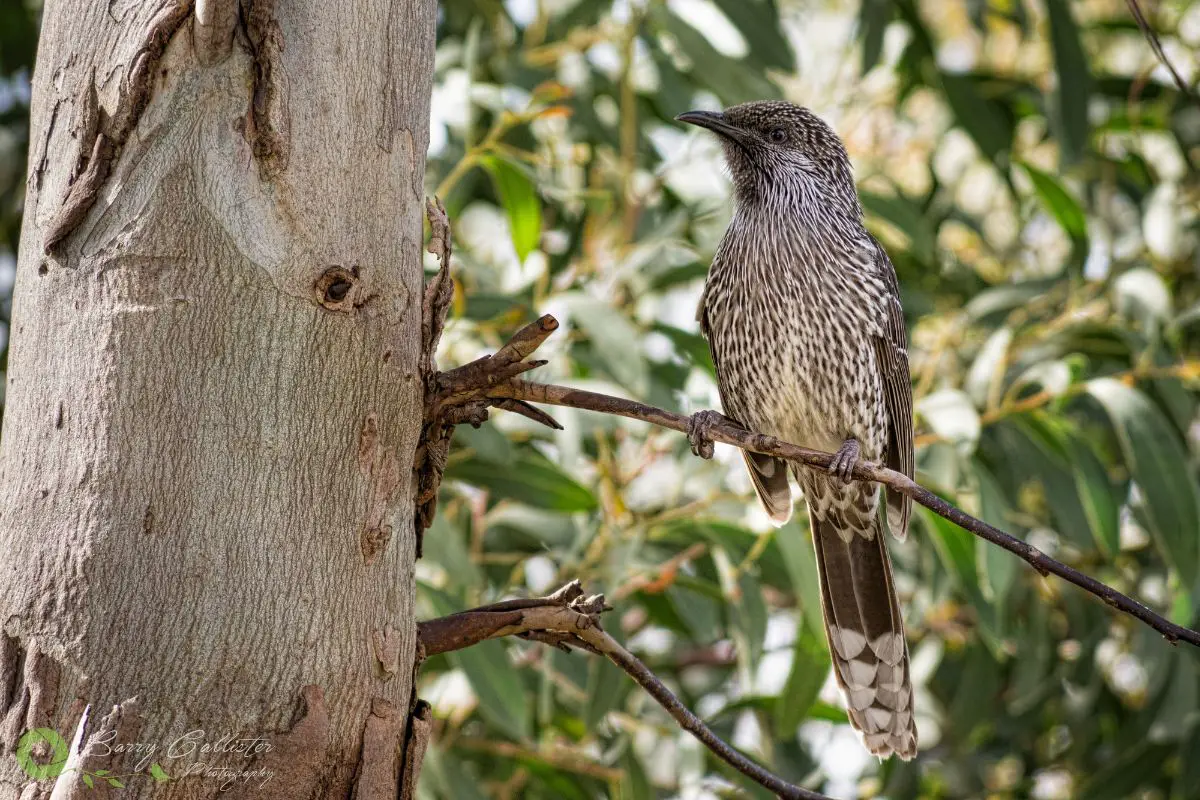
Unfortunately, humans have a bad history with birds; having killed many of them for research, destroyed a great deal of their habitat, and not to mention how loud and dominant we are in our everyday lives. All of this makes us predators in the eyes of birds.
Read more about why birds are so afraid of us in this article here on the site.
Most birds see a human and will react in a way that indicates they are afraid of us. They become agitated, chirp warning calls to other birds in the area, or simply fly off to escape us and seek shelter.
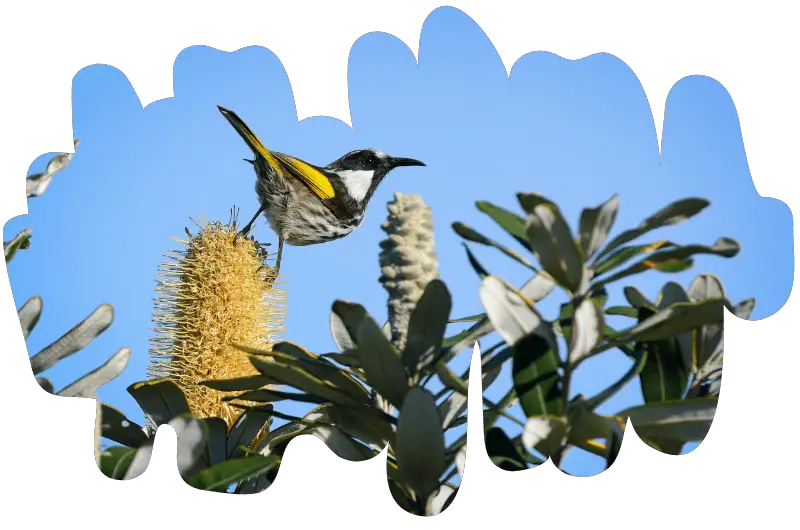
Can you get paid to birdwatch? The answer in this blog post here on the site may surprise you.
Why Bird Blinds Are Effective
By hiding inside a bird blind, we conceal the majority of our movements. Generally, when a person uses a hide they will remain very still and quiet which means when the bird looks towards the blind all they see is a stationary structure.
Birds are intelligent enough to understand that most structures do not pose a threat to them. So from the shelter of a bird hide, we can view them behaving in a natural way and also avoid scaring them to the point of flying away.
What Types Of Bird Blinds Are There?
Chances are if you’ve been to a park, lake, or wetlands you may have seen a permanent bird hide or blind. It may have been a hut with tiny windows or maybe a wall with windows like the one in the image below:
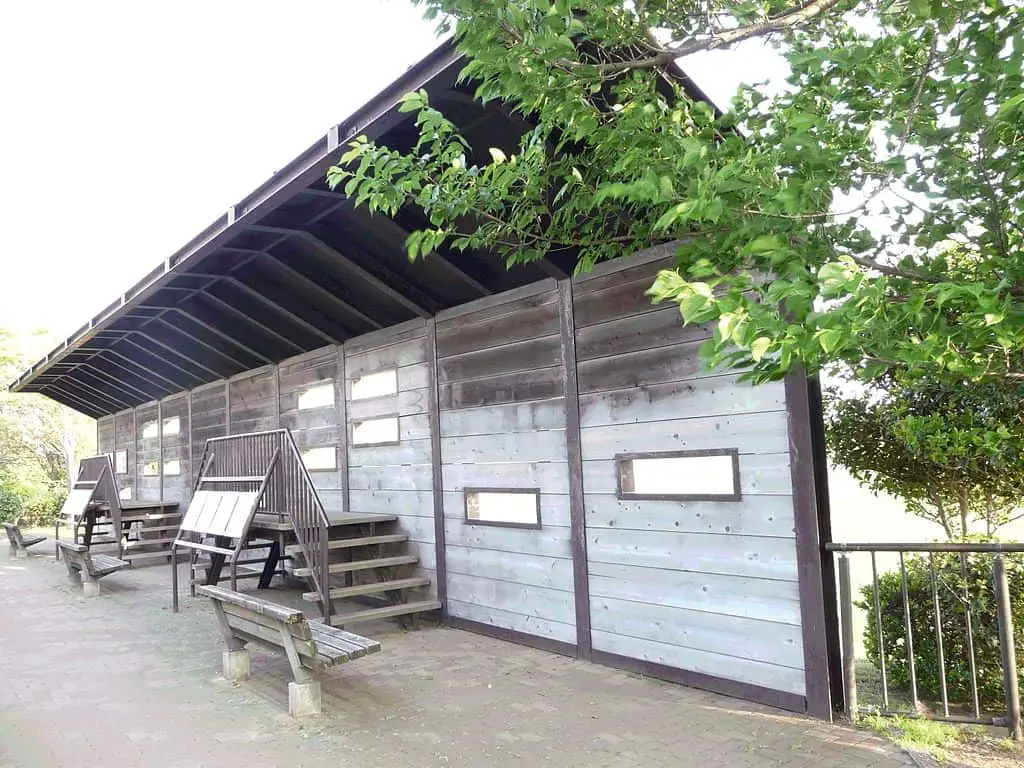
There are other types of bird hides though and some of them, you may not have considered to ever be a bird blind.
Foliage Hide
This is a bird blind provided by nature. Concealing yourself in the foliage of trees or bushes is a great way to hide while watching or photographing birds.
I used this technique many times in the garden of our home in Gembrook, Victoria Australia.
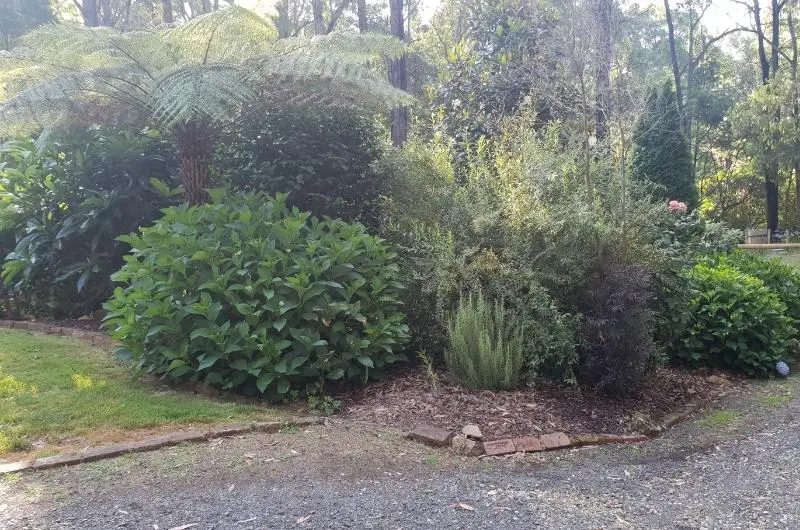
As you can see, this garden had tree ferns and other bushes under which I could hide from the variety of birds that would visit our garden. If I sat still enough and quiet enough, the birds would come right in close to me.
One-person Portable Hide
These types of bird hides can really be anything from a tarp or camouflage net to a portable tent for one person to sit inside.
Portable hides should be lightweight, not brightly colored, breathable (you don’t want to get too hot in there!), weatherproof, stable, nor have loose parts that can flap about.
You also want it to be big enough for you to fit in without brushing against the walls. This will create noise that may spook the birds.

Camouflage tents such as the one below are most commonly used by bird photographers.
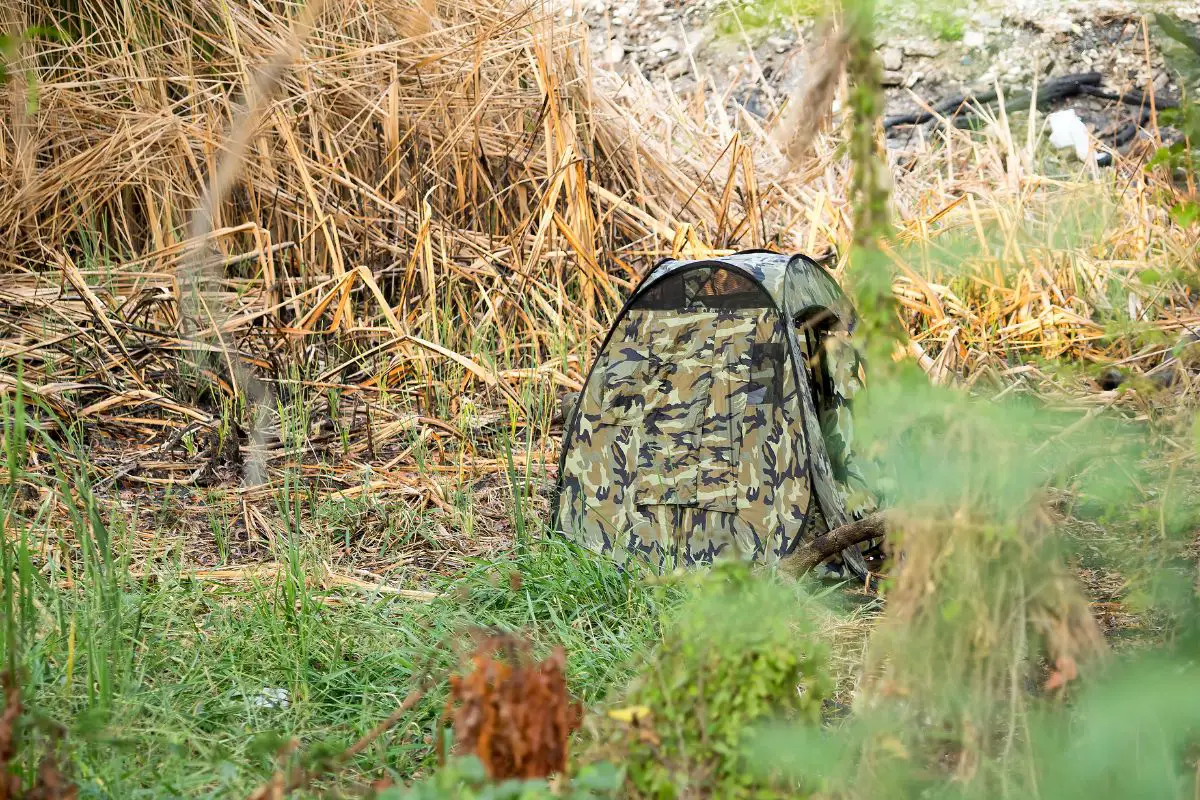
Find out if a 300mm lens is enough for bird photography in this post here on my blog.
The most portable type of bird blind is probably a camouflage suit such as the one below. These allow you to blend into the surroundings but stay mobile at the same time.
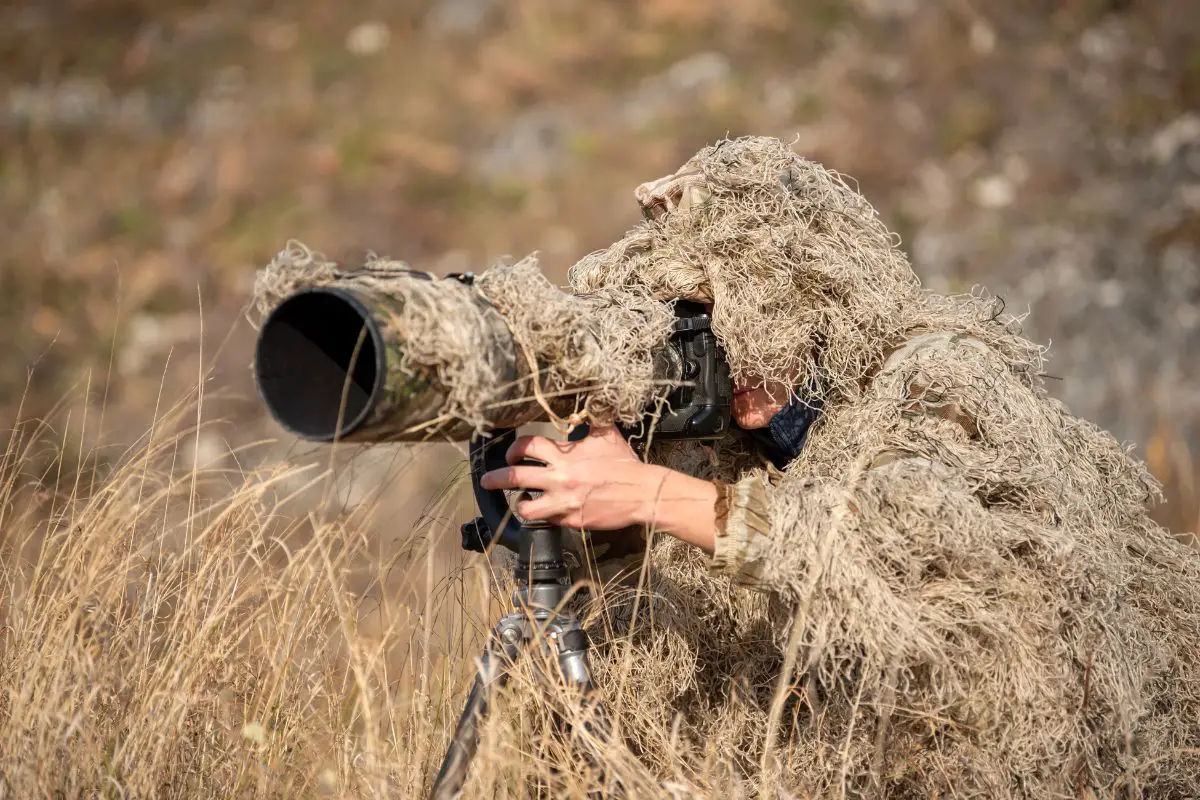
Mobile Hides
The best type of mobile hide, believe it or not, is your car!
Watching or photographing birds from your car is really effective. As long as the vehicle is stationary, you have a certain amount of screening from the birds.
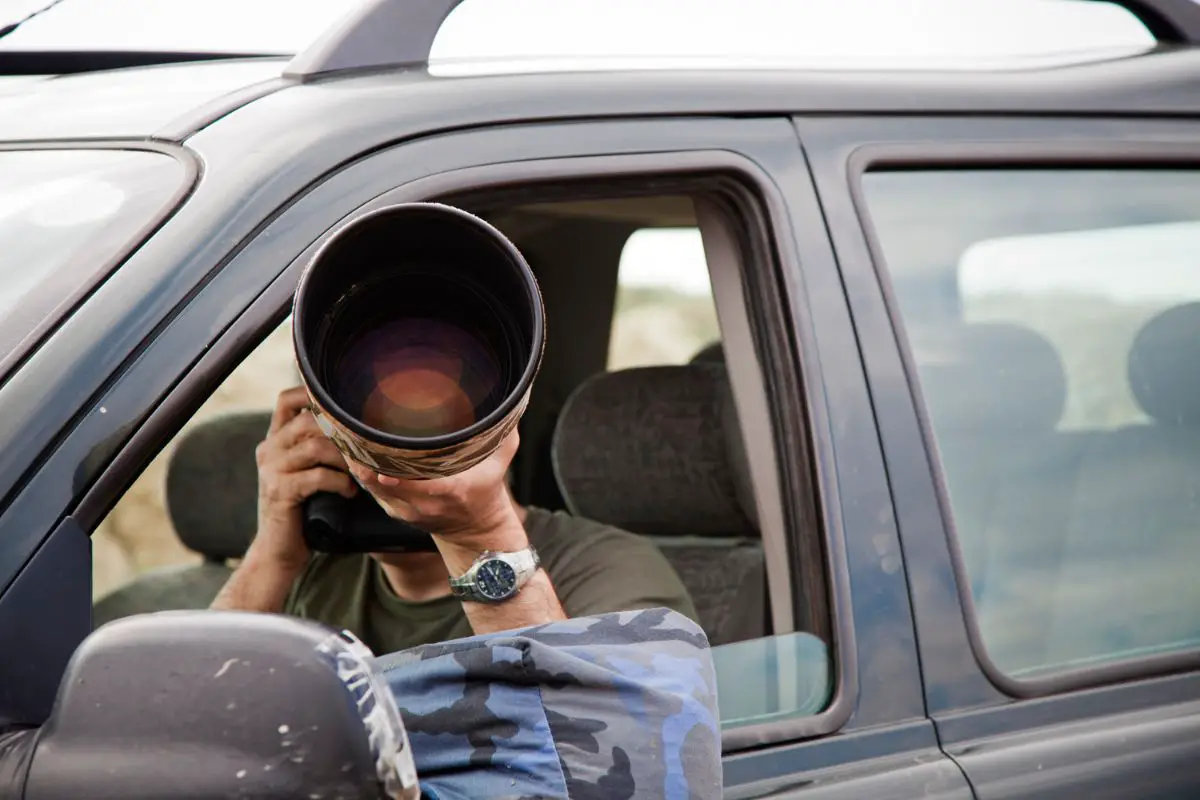
Birds will see a stopped car as just another structure and will most likely ignore it to a certain degree.
Of course, this type of bird blind requires vehicle access to the area where the birds are located.
You can also use a boat in the same manner. As long as the boat is drifting silently along in the water, birds will be less wary of it and allow you to get some great shots.
I have managed to get some amazing shots from my kayak. Birds basically ignore you (unless you get too close) when drifting by in a kayak.
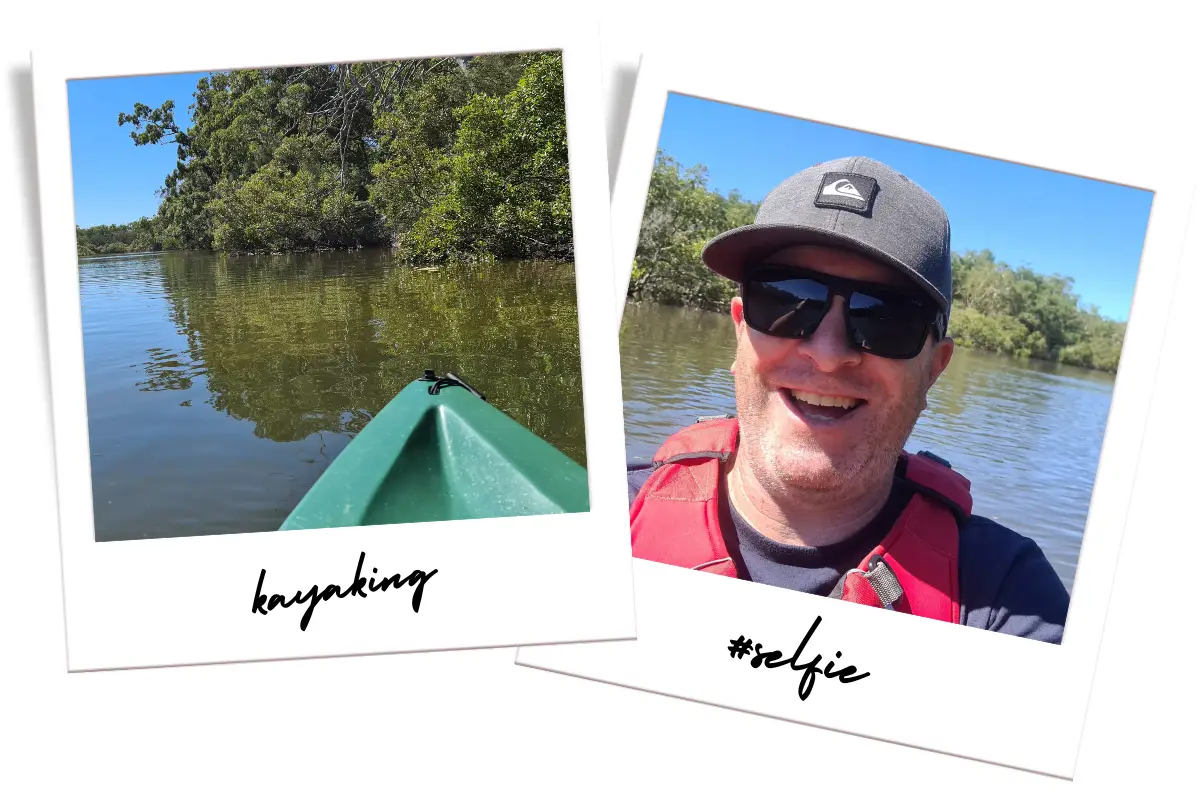
The Great Egret on the top left of the image below allowed me to drift down the river with it while it hunted for fish only 5 meters away.
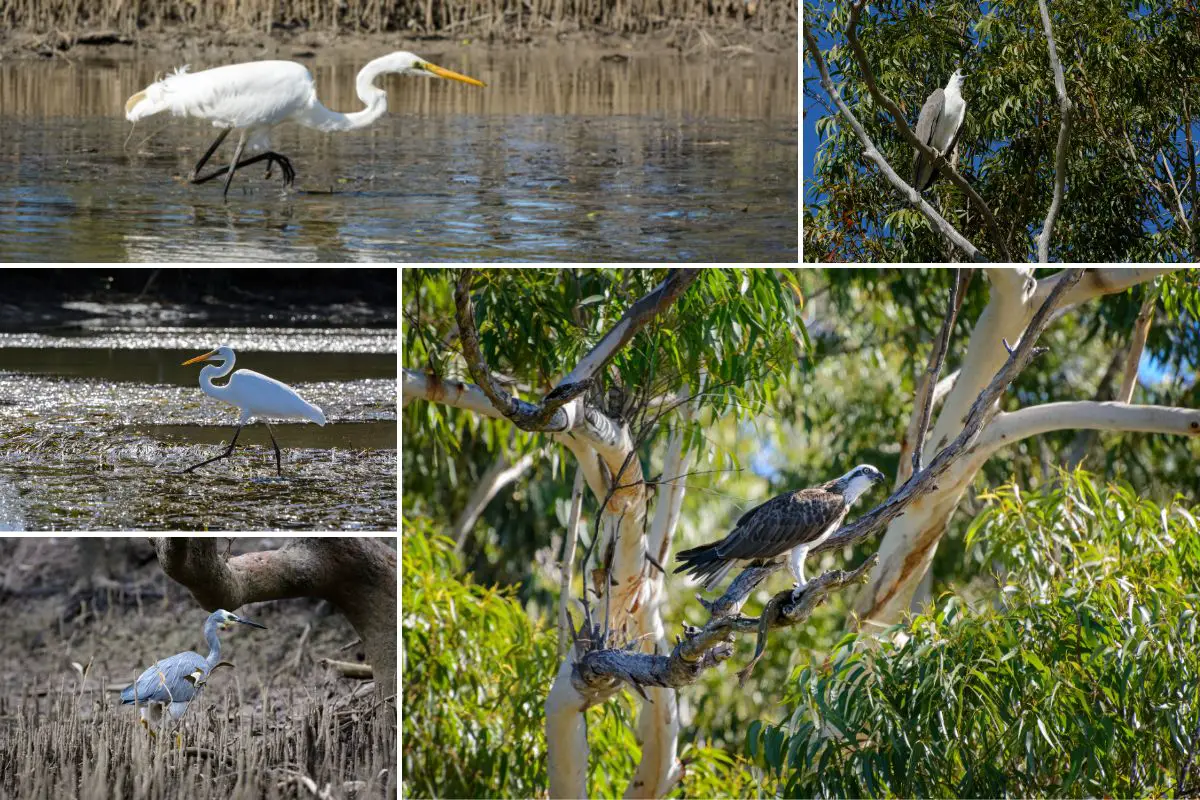
Drifting in a boat also allows you to get a great low perspective in your shots such as the White-faced Heron on the bottom left above.
The video below shows wildlife photographer Paul Miguel wading around in his portable floating hide. He managed to combine both portability and mobility with this blind:
Discover the best f stop for bird photography right here.
Permanent Hides
As their name suggests, permanent hides or blinds are structures that can’t be moved easily, such as huts or towers. These are the type of bird blinds that you find in sanctuaries, wetlands, or national parks.
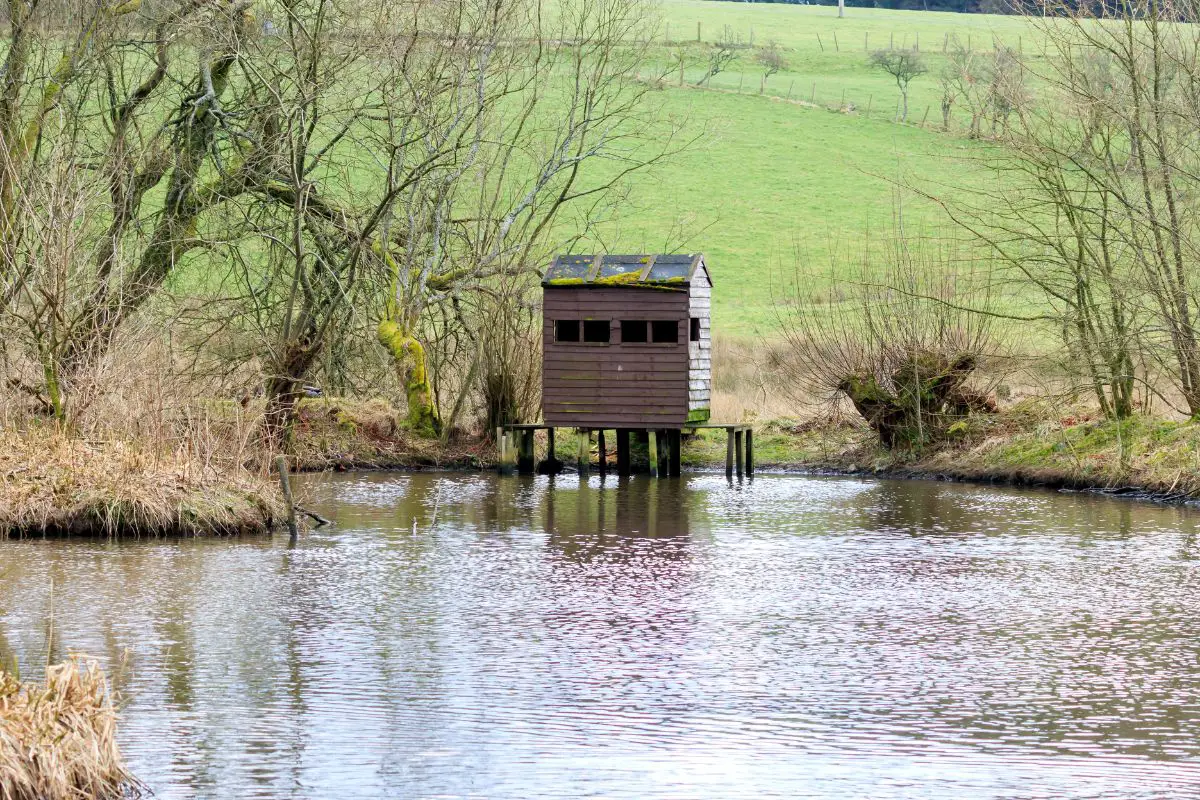
Sometimes, getting an elevated view helps to see the birds better and also keeps you out of their sight. This is where a bird hide tower such as the one in the image below comes in handy:
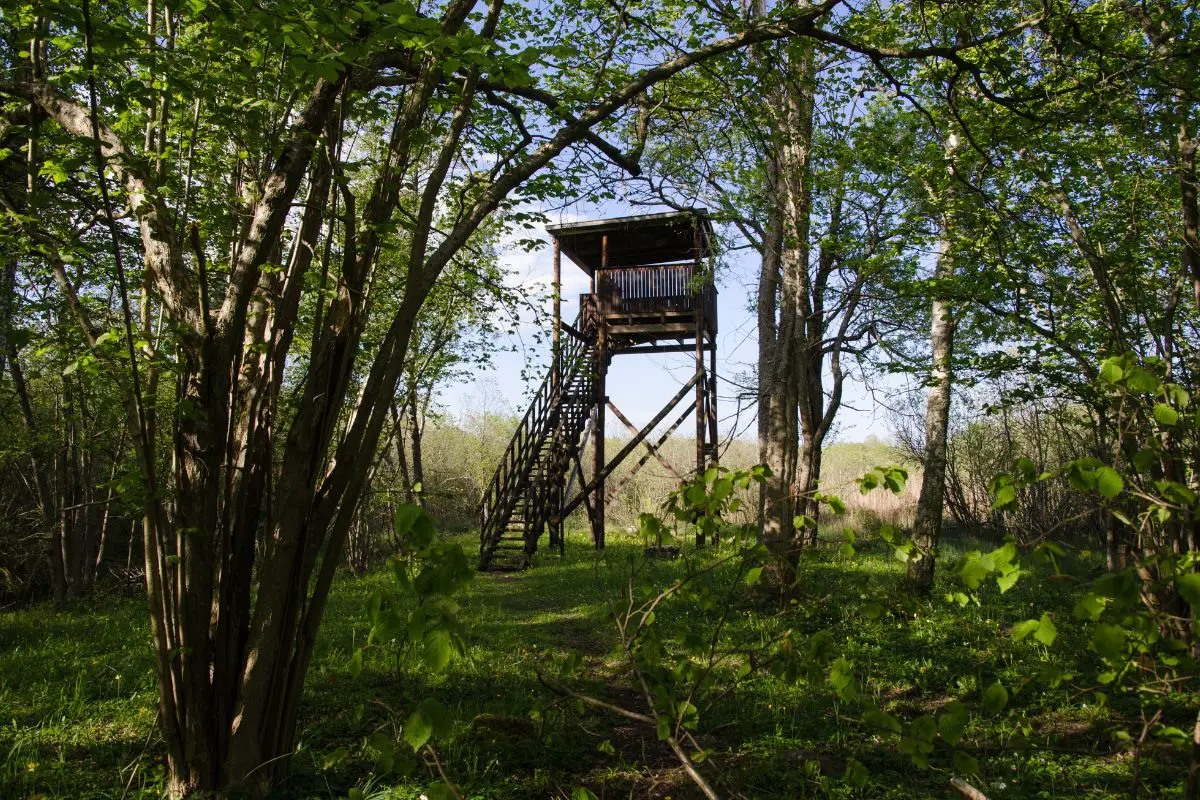
Bird blinds can also be a simple gazebo or pergola-type structure without walls. In the one below you can see there are tiny windows cut out of the front wall. This is enough for people to see the birds but remain relatively unseen.
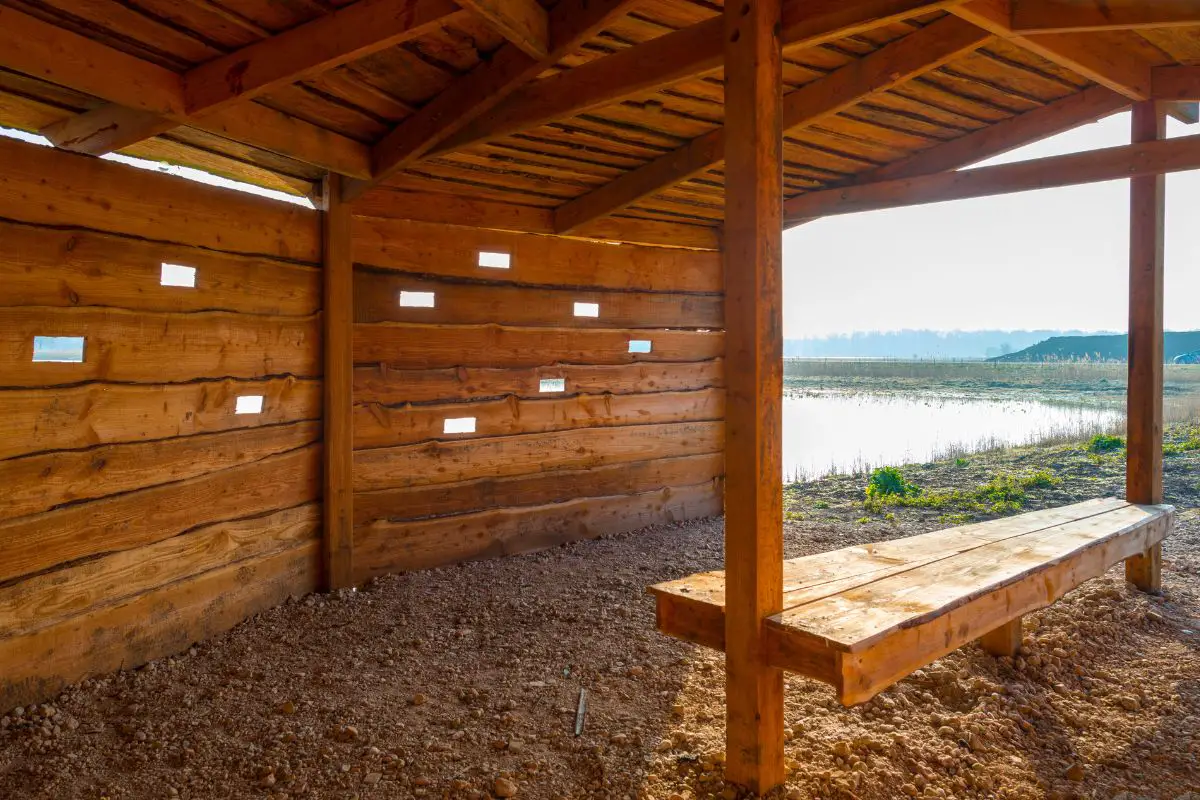
Is It Necessary To Use A Bird Hide?
While a bird blind or hide is effective for viewing and/or photographing birds in their natural habitat and exhibiting natural behaviors without disturbing them, it is not necessary.
You can get really good results by simply sitting quietly and still, waiting for the birds to get used to you and come a little closer.
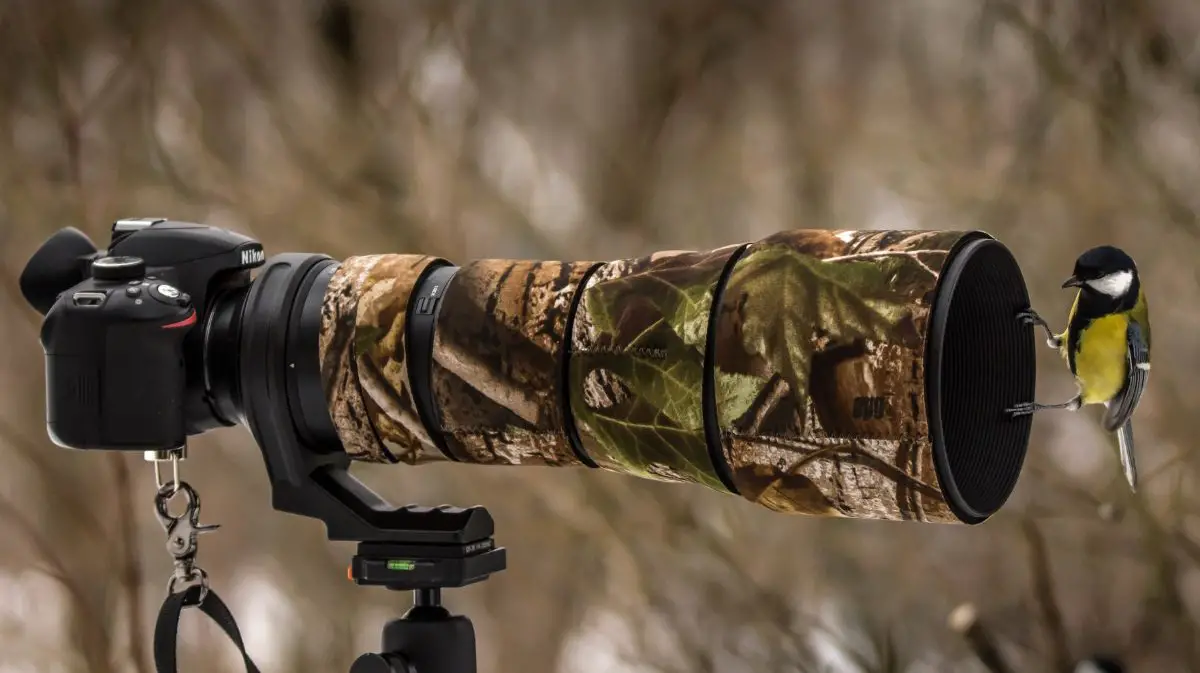
The birds will behave differently if they can see you. However, if you spend enough time going to the same spot each day or at least a few times a week, the birds will start to realize that you’re not a threat and will become more relaxed around you.
If there is a bird blind close by, however, I always suggest using it as opposed to staying out in the open.
References
- Bird Hides For Birders And Builders – Birdlife Australia
- What Can Birds Hear? – eScholarship
